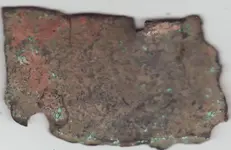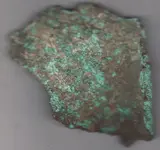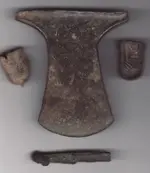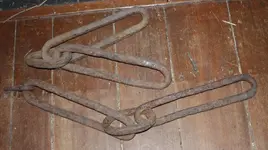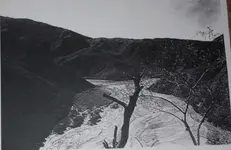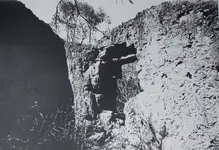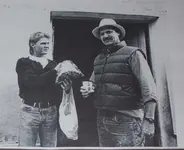Re: Incas's treasures
Hello,
I also have a great interest in all things Inca. I hope to get to South America one of these days. Anyway, I thought I would share this little write up from my archives about Inca Treasure still waiting to be found.
The very ancient ruined city of Tiahuanaco on the south shore of Lake Titicaca in Bolivia, there is a great treasure to be found, treasure that the early conquistadors missed. In the original buildings throughout the city the gigantic stone blocks of which they were constructed were all held fast together by huge staples, or "keys" of solid silver. The Spaniards pulled out and made off with a great number of these, and occasionally some are found today, but the city ruins, if excavated systematically, would undoubtedly yield tons of these great staples.
Immense quantities remain buried under the fallen walls and rubble. There is hidden away somewhere in the crumbling ruins of Tiahuanaco a great hoard of magnificent golden objects, utensils and other ancient relics placed there by the original inhabitants beyond the reach of plundering Spanish hands. In the mountains of the province of Inquisivi, La Paz, in the district of Palca, 65 kilometers west of Cochambamba, northwest over the Cordillera del Turnarii is hidden the Sacambaja Treasure hoard.
One document states the cache was made by the Incas, while yet another says that the Jesuits, before their expulsion from the Americas in 1767, hid enormous quantities of gold in Tapadas along the Rio Sacambaja.
In an expedition around 1900, Cecil H. Prodgers came upon the following, remarkable document relating to the "Caballo Cunco Treasure," buried by the Jesuits:
"If you find a steep hill all covered with dense forest, the top of which is flat, with long grasses growing, from where you can see the River Sacambaja on three sides, you will discover on the top of it, in the middle of the long grass, a large stone shaped like an egg, so big that it took 500 Indians to place it there.
"If you dig down underneath this stone for five yards you will find the roof of a large cave, which it took 500 men 2 1/2 years to hollow out. The roof is 70 yards long, and there is two compartments and a long narrow passage leading from the room on the east side to the main entrance 200 yards away. If you proceed along the passage, on reaching the door, you must exercise great care in opening.
"The door is a large iron one, and inside on the right you will find an image made of pure gold three feet high, the eyes of which are two large diamonds. This image was placed there for the good of mankind. You will find in the first room 37 large heaps of gold, in the second room, a large box and 37 big heaps of gold.
"On entering the second room, you will find in the righthand corner a large box clumped with three iron bars; inside this box is 90,000 dollars in silver money, and 37 big heaps of gold. Distributed in the hollows on either side of the tunnel and the two rooms are all together 163 heaps of gold, of which the value has been estimated at $60,000,000.
"The walls of the two rooms have been strengthened with large blocks of granite; from the roof downwards the distance is five yards more. The top of the roof is portioned off into three distinct esplandes, and the whole has been well covered over for a depth of five yards with earth and stone. When you come to a place 20 feet high, a wall so wide that two men can easily ride abreast, cross the river and you will find the church, monastery and other buildings.
"Great care must be taken on entering these rooms, as enough poison to kill a regiment has been laid about." The monastery mentioned was built by the Jesuits in 1635 and abandoned in 1735. The treasure represents 11 year's accumulated workings of the gold mines of El Carmen and Tres Titilias, and from the gold and diamond washings carried on near Santa Cruz by 2,000 Indians directed by Jesuit fathers. All of this treasure was hidden in the hill, except for $350,000 for each priest.
Mr. Prodgers was shown this document by a lady descended from one of the brothers of one of the Jesuits of the gold mine. President Malgarejo of Bolivia headed one expedition and another was started out from Valparaiso in 1895, but both failed to find the treasure. An Englishman dug around the banks of the Rio Sacambaya and finally unearthed a silver crucifix and a parchment which read:
"Ye who reach this place withdraw. The spot is dedicated to the Lord, and he who dares break in and steal, on him shall there fall a dolorous death in this world, and eternal condemnation in the next. The riches herein belong to God, and not to men."
This expedition also unearthed the skeletons of 300 Indians in a cave covered by a landslide which had not the look of being made by nature. The Indian workers employed by the expedition refused to work further and the explorations ended.In the immediate area of the Jesuit treasure (#7), Indians found a cache of silver in a mound near the river where a previous owner had found $100,000 worth of silver. All around Sacambaya can be found rich gold-bearing reefs. The ancient gold mines of the Incas were located towards the country of the Moxos, a tribe of Indians inhabiting the lands around the headquarters of the Madeira and both banks of the Mamore Rivers.
There were a great number of mines here. The Incas extracted gold from many mines around the headwaters of the Madeira and Mamore Rivers. There is much wealth awaiting the treasure hunter who locates these ancient workings as well as the ancient Indian cemeteries located nearby. The most fruitful source of silver in the New World was at the famous mine of Potosi in Bolivia. It is reasonably assured that a great many caches of treasure were secreted in this area over several centuries. The country of Bolivia abounds in lost gold, silver, lapis lazuli and mercury mines of great richness once worked extensively by the Incas, followed by the Jesuits, then abandoned during the revolutionary days.
From the Spindle Archives
Author:Unknown
Hope you enjoy
Daryl Friesen
www.spindlequest.com/ecuador.html





 Bolivia
Bolivia